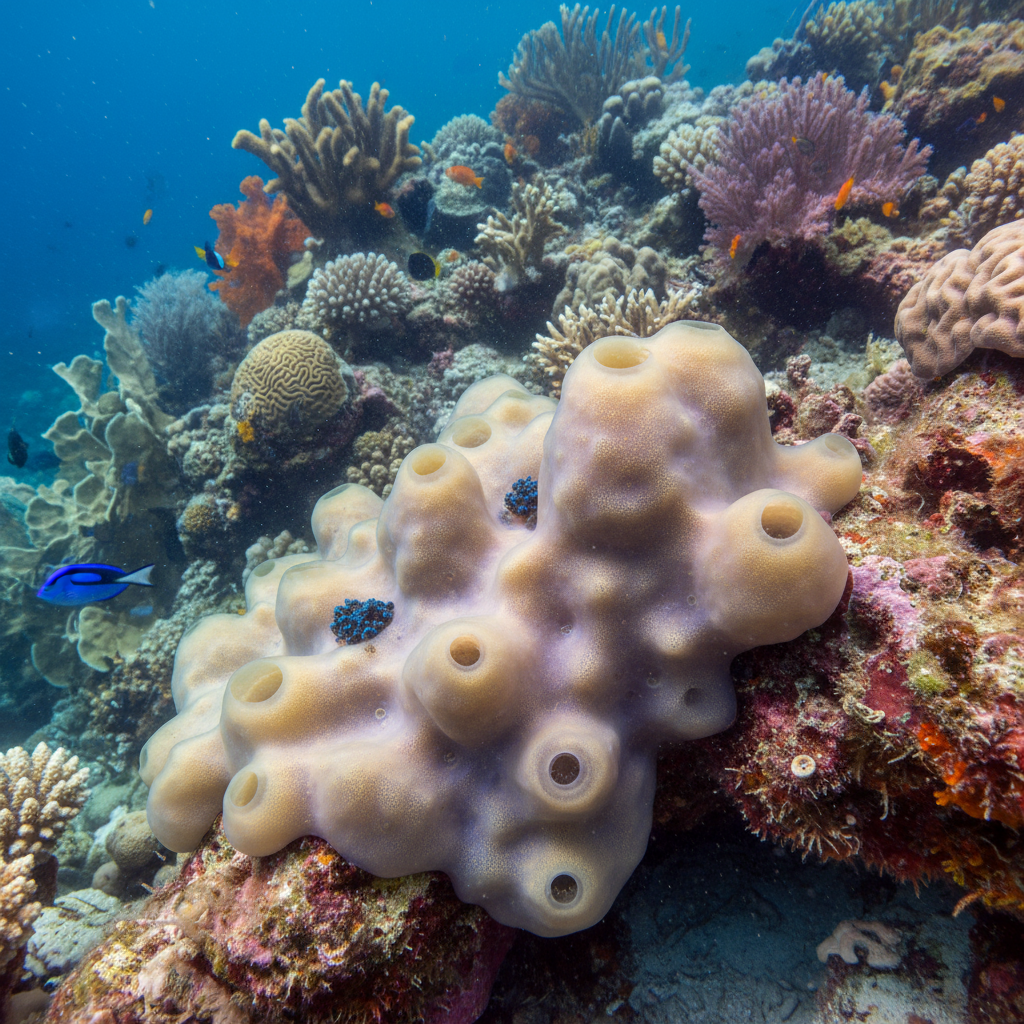Classification of Oscarella
- Phylum: Porifera (Pore-bearing animals with a cellular organization and asymmetrical or radial symmetry)
- Class: Homoscleromorpha (Simple marine sponges with a unique basement membrane and reduced skeleton)
- Order: Homosclerophorida (Sponges lacking mineral skeleton or possessing simple siliceous spicules)
- Family: Oscarellidae (Sponges characterized by soft, encrusting forms without spicules)
- Genus: Oscarella

It is a fascinating genus of marine sponges known for its delicate structure and biological significance.
This genus comprised of soft-bodied sponges without traditional skeletons, making them unique within the Porifera.
Habit and Habitat
Oscarella species are predominantly marine and exhibit encrusting habits, forming thin layers or thick patches over rocks, stones, or algae. They inhabit shallow coastal waters to moderate depths, often residing on sheltered surfaces such as vertical rock faces or under overhangs. Their fragile and gelatinous consistency enables them to adapt to diverse environmental conditions.
Geographical Distribution
Oscarella sponges are widely distributed in marine environments, notably around the coasts of Northwestern Europe and the Mediterranean Sea. Some species extend to the northeastern Atlantic and specific regions like the British Isles, Ireland, and parts of the Mediterranean basin. Their presence varies with water depth, ranging from intertidal zones to depths exceeding 300 meters.
General Characteristics
- Oscarella is a bright, velvety coloured specimen with lobulated upper surface.
- Spicules are completely absent.
- Lower surface is attached to substratum. Basal part contains eggs, while peripheral part contains canal system.
- Thick cortex is absent. Lobules are covered by thin dermal layer.
- Each lobule encloses an excurrent canal, surrounded by flagellated chambers. Depressions between the lobules contain incurrent canals.
- Chambers vary from eurypylous to the aphodal type.
- Canal system leuconoid. Skeleton is absent. The structures without skeleton.
- Colonies range from 10 to 30 cm in width and up to 3 cm in thickness.
- They form lobed, rounded nodules giving the surface a textured appearance.
- Coloration varies widely, from shades of yellow and brown to occasional red, green, violet, or blue hues, often combined with a creamy base.
- The surface is velvety and smooth, with widely scattered ostia (small pores) for water intake and distinct oscula (larger openings) for water expulsion.
- Uniquely, Oscarella lacks both spicules and spongin fibers, contributing to their soft, gelatinous texture.
- Filter feeders, they draw water through pores to extract nutrients, expelling it via oscula.

Special Features
One remarkable attribute of Oscarella sponges is their simple, spicule-less body structure, setting them apart from many other sponges which rely on skeletal elements for support. Their gelatinous and soft tissue is also key for camouflage and flexibility in varying marine conditions. They can reproduce both sexually, by releasing ciliated larvae, and asexually via budding or fragmentation.
Identification
Identifying Oscarella involves noting the absence of spicules and the presence of encrusting, lobed colonies with a velvety, gelatinous texture. The wide range of colors and surface nodules helps distinguish species within this genus. Underwater, their lobulate surface and delicate oscular chimneys are visible features. They are often confused with species like Halisarca, but microscopic examination reveals differences in cell types and chamber structures.
References
- https://www.zoologytalks.com/classification-of-oscarella/
- https://en.wikipedia.org/wiki/Oscarella_carmela
- https://www.habitas.org.uk/marinelife/sponge_guide/sponges.asp?item=C960
- https://www.marlin.ac.uk/species/detail/33
- https://animalia.bio/oscarella-lobularis
- https://en.wikipedia.org/wiki/Oscarella_lobularis
- https://www.habitas.org.uk/marinelife/species.asp?item=c960
- https://www.marinespecies.org/aphia.php?p=taxdetails&id=731041
